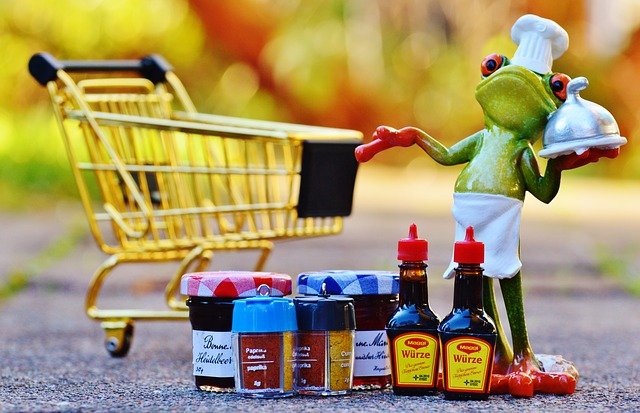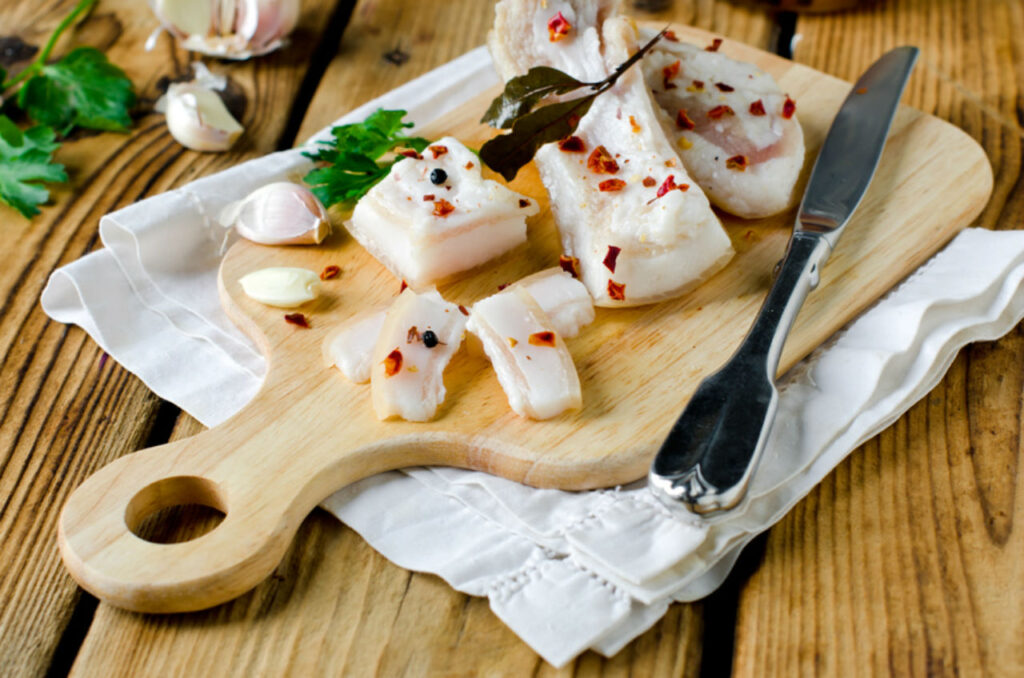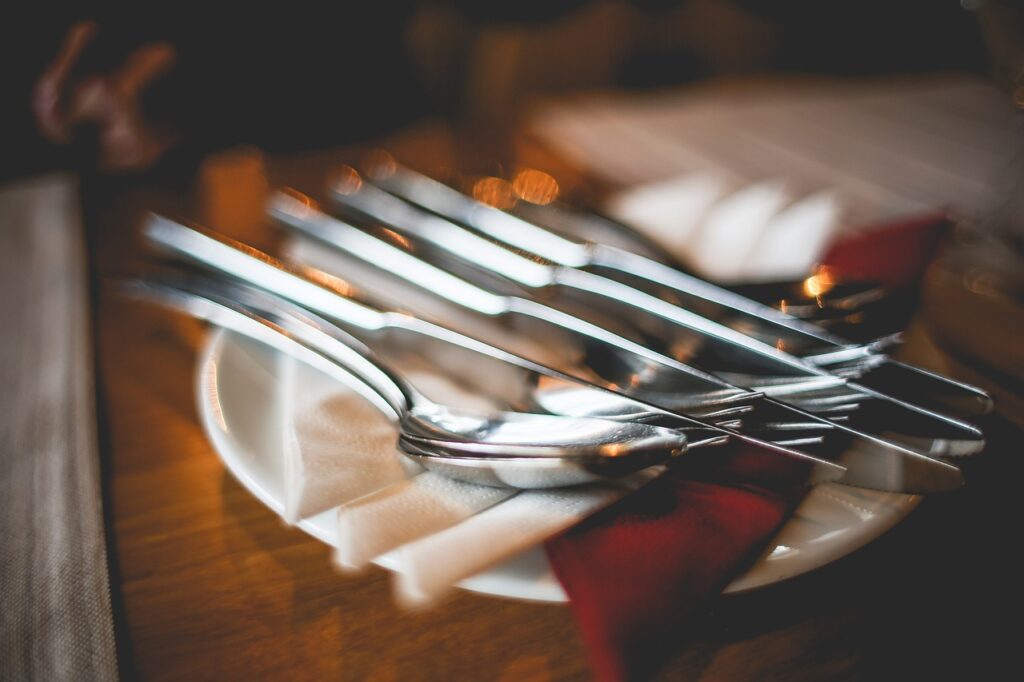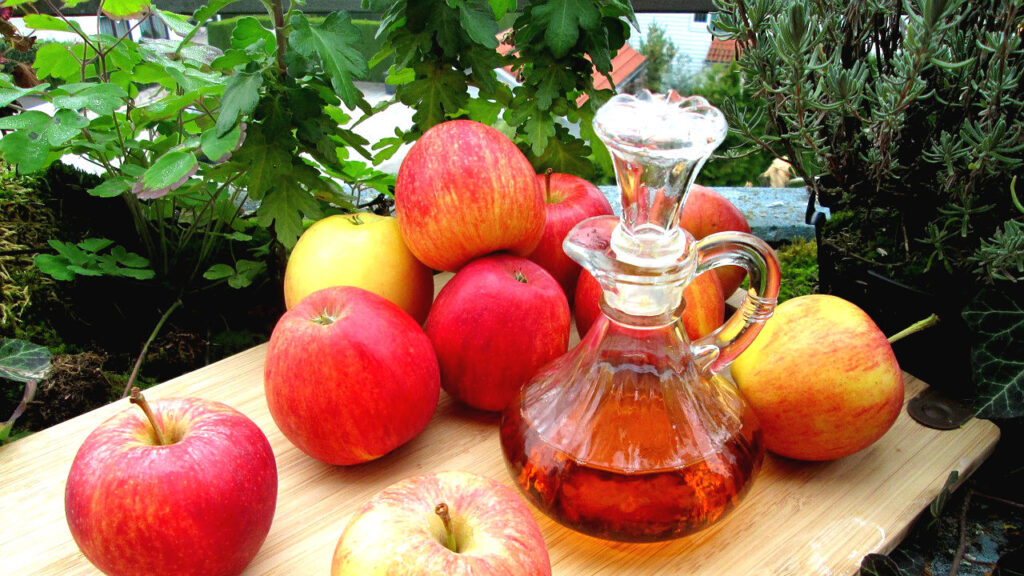Why You Need to Eat Organic Lard: 8 Simple Reasons
When people hear the word lard, they immediately imagine clogged arteries. This misconception has been largely debunked over the past many years. Lard is a saturated fat that can be safely consumed in moderation as part of a healthy diet.
- What is Organic Lard?
- History of Organic Lard
- Where to Find the Best Organic Lard
- 8 Reasons to Use Organic Lard
- #1 – Organic Lard is Heart Friendly
- #2 – Organic Free Range and Pastured Lard Can Be Rich in Vitamin D
- #3 – Lard is a Healthy Source of Cholesterol
- #4 – Lard is Perfectly Suited for Baking
- #5 – Lard Can Be Bought Locally
- #6 – Organic Lard is Neutral in Flavor
- #7 – Organic Lard is Sustainable and Environment-Friendly
- #8 – Organic Lard is Traditional
- Wrap-Up
- Organic Lard: FAQs
- What are the benefits of eating organic lard?
- Is lard healthier than vegetable oils?
- Does lard raise cholesterol levels?
- What dishes can I cook with lard?
- Is lard better for high-heat cooking than olive oil?
- How should I store organic lard?
- What is the difference between lard and tallow?
- Where can I buy high-quality organic lard?
For greater context, check out the below article from Science Daily.
“Trans fats, But Not Saturated Fats Like Butter [or Lard], linked to Greater Risk of Early Death and Heart Disease” – Science Daily
Lard is essentially pig fat. This fat can commonly be found in unrendered or rendered forms and can be found locally as well as in many grocery stores. The rendering process of lard is quite simple. Pork fat is steamed or boiled in water; after a separation process, the leftover fat is known as lard. The end product is then strained to remove any impurities.
Lard can also be made easily at home in a slow cooker or on the stovetop by adding water and then slowly cooking the water and pork fat until all the water evaporates.
Perhaps you remember your grandparents talking about all the lard their families used in decades past? Well, it’s been around for quite some time. It’s used worldwide as a cooking fat, and it results in more savory dishes and flakier pastries (it’s excellent for baking). The use of lard is increasingly becoming more popular in our day, especially among the more health-conscious.
What is Organic Lard?
As stated earlier, lard is a saturated fat derived from pork fat. Tallow, which is derived from beef fat, is very similar to lard in composition.
- Lard is mostly made up of fats, and these fats are known as triglycerides.
- Each triglyceride molecule consists of three fatty acid chains.
- The distribution of fatty acids in these chains sets one oil apart from another.
Interestingly, lard can significantly vary in fatty acid content, dependent upon the diet of the animals it was sourced from. For example, pigs in North America are mainly fed corn, unlike pigs raised in Spain, which are often fed acorns and peanuts, resulting in varying kinds of lard.
History of Organic Lard
In the early 1900s, lard was one of the most common cooking fats in homes around the world. It was essential in countless recipes—everything from perfectly flaky pie crusts and tender biscuits to rich gravies, crispy fried chicken, and even old-fashioned stovetop popcorn.
But over the past century, lard virtually disappeared from most kitchens. Several cultural and industrial shifts played a major role:
The Shift Away From Traditional Fats
Beginning in the mid-20th century, saturated fat was heavily criticized and widely believed to be a leading cause of heart disease. As a result, lard—high in natural saturated fat—quickly gained a reputation as unhealthy, even though many of those claims were overly simplified or later disproven.
During this time, industrial oils such as hydrogenated vegetable oil and margarine were aggressively marketed as “healthier” alternatives. Ironically, these substitutes introduced trans fats, which we now know are far more harmful than natural animal fats.
Damage From Fiction and Public Fear
Public perception took another hit when Upton Sinclair’s famous 1906 novel The Jungle included dramatic fictional scenes of workers falling into lard-rendering vats, with the contaminated product supposedly being sold to consumers. Even though the book was intended as political commentary—not a factual report—the imagery stuck. Lard was painted as dirty and unsafe.
Aggressive Marketing From Competitors
The final blow came from powerful advertising campaigns by brands like Crisco, which promoted their hydrogenated vegetable shortening as modern, clean, and superior. These campaigns were extremely effective. Lard went from being a beloved kitchen staple to being labeled “poverty food” or an outdated relic.
In reality, the decline of lard had little to do with its actual nutritional value and much more to do with marketing, industrial convenience, and a cultural shift toward processed oils.
Where to Find the Best Organic Lard
Lard is healthier when it comes from pigs that eat organic plants and feed. Containers of lard can be bought in supermarkets, but these products have usually been hydrogenated so that they will last longer. The store-bought brands are often heavily processed and may also be derived from pigs that were given harmful chemicals like ractopamine.
Why buy lard that’s been treated with chemicals, bleached, then deodorized with deodorizing agents? Always go organic when it comes to purchasing lard. There’s simply no reason not to.
Choose the minimally processed lards sourced from pigs fed USDA Certified Organic diets.
High-quality USDA Certified and minimally processed lard can easily be found online and at health-conscious grocery stores like Whole Foods. While it’s more expensive than the cheap fats found at the average grocery store, a little lard goes a long way.
8 Reasons to Use Organic Lard

There are so many benefits and reasons to use lard; too many to have an exhaustive list here. Yet, we’ll go ahead and at least give you a few reasons why you can feel good about using this wonderfully simple fat in moderation.
#1 – Organic Lard is Heart Friendly
As noted earlier, the idea that saturated fats are directly linked to the onset of heart disease is a myth. On the contrary, the onset of heart disease is linked to highly processed fats like margarine and other trans-fats, not to naturally saturated fats like lard. Lard and butter have traditionally been used massively in earlier times without any trouble.
This issue isn’t that all fat is bad. This issue is that unhealthy diets, including those high in fats, lead to a wide variety of negative health outcomes.
Lard isn’t the enemy when the following general rules are followed:
- Eat a diet plentiful in whole grains, fruits, nuts, beans, and vegetables (especially leafy greens and beans).
- Shift away from the Americanized diet, where meat always takes up the most significant portion of the plate. Instead, veggies and whole plant-based foods should be the main course.
- If or when you opt for eating meat, eat lean meats and cuts, as well as lean seafood options.
- Avoid processed foods and refined sugars.
- Use fats sparingly and in moderation. That means that you don’t need to add fat to every meal.
Various reliable sources found that saturated fats are indeed part of a healthy diet, including one study of over 300,000 individuals published by the American Journal of Clinical Nutrition (Source 1, Source 2). The issue has more to do with bad diet habits in general and less with using lard as one of many ingredients.
#2 – Organic Free Range and Pastured Lard Can Be Rich in Vitamin D
As long as your lard was sourced from pigs regularly exposed to sunlight, it will contain higher amounts of Vitamin D. Also, since Vitamin D requires fatty acids to help calcium’s absorption into the body, it’s wise not to limit their intake. Not only does lard improve the taste of your food, but it also may help supplement your vitamin D intake or calcium uptake.
#3 – Lard is a Healthy Source of Cholesterol
Studies show that saturated fats [like lard] increase HDL cholesterol levels. The increase in HDL cholesterol is associated with a decreased risk of cardiovascular disease in this study. That being said, HDL isn’t the only factor in a decreased risk of heart disease because other genetic factors also come into play.
Whatever the case, the average individual can consume lard and other fats in moderation. The only things that should be eaten in abundance are whole plant-based foods.
#4 – Lard is Perfectly Suited for Baking
If you can occasionally appreciate a good biscuit, try using lard in your recipe next time. Whether you’re preparing pastries, biscuits, pie crusts, or cookies, implementing lard into your recipes makes for excellently tasting baked goods. Varying the kinds of fats you use in your baked goods will also allow you to experiment with their differing taste qualities and characteristics.
Personally, I really enjoy alternating fats from time to time when I bake because it’s amazing how different the results can be. For example, if you make homemade brownies with coconut oil one week, try making them with lard the next time you make them. I absolutely love making them with both oils, but I can choose which fat I want to use depending on which taste I prefer at any given time.
#5 – Lard Can Be Bought Locally
If you’re concerned about decreasing your carbon footprint, buy lard from your local pig farmer. Supporting local farmers is an excellent way to do business with those trying to provide for their families.
Farming isn’t easy nowadays, so support local products from local farmers whenever you can. Also, you may even be able to take a trip to your local farm to see how they raise their pigs so that you know what you’re getting. Better yet, you could purchase unrendered pork fat from them (very cheap) and render the lard yourself.
It’s always fun to find out how things are made so that you don’t become disconnected from reality, which often happens in our instant gratification society. Local farms are excellent places to learn about how the food we eat gets to the table. Hopefully, the local farms where you live provide good examples of the process.
#6 – Organic Lard is Neutral in Flavor
While some people use coconut oil because it’s a heat-stable cooking oil, it has a unique flavor that some may not like all that much or may not be appropriate for specific recipes. So, if you need a neutral-flavored cooking oil, lard should be high up there on your list of flavorless oil choices.
Lard is perfect for deep frying and sautéing due to its high smoke point. Using organic lard results in a perfectly browned crust on vegetables and meats without any distinct flavor. Instead, it seems to enhance the flavors already in any given dish. Since it’s neutral in flavor, organic lard is also perfect for baked goods, as noted earlier. That’s right, it won’t make your cherry pie taste like ham, promise.
#7 – Organic Lard is Sustainable and Environment-Friendly
If you’re not already purchasing organic oils, you have no idea whether or not they’ve been made from genetically modified organisms (GMOs) or were sourced from crops that were heavily sprayed. Oils like organic lard are a big improvement over conventional and “natural” run-of-the-mill cooking oils at the grocery store.
Also, since lard comes from pigs (which can thrive almost anywhere), you’re investing in a sustainable production process. If you’ve never seen pasture-raised pigs, you should probably know that they greatly help the environment. Granted, they will tear up vegetation and grass quickly so that it won’t look pretty. But, by tearing up topsoil and foraging, they help fertilize the ground naturally.
Purchasing sustainably raised organic lard is a great way to say “NO” to a conventional market that contributes to hundreds of thousands of pesticide-ridden fields and the thriving preservative, antibiotic, and chemical market in the meat production business.
#8 – Organic Lard is Traditional
Over the centuries, pork fat has been used time and time again. Thankfully, in recent times, there seems to be a return to simplicity in many areas of life. There’s a certain excitement and enticement when it comes to thinking about rendering fat the way our great-grandparents did when they were young.
Believe it or not, returning to the old ways is actually beneficial in many cases. Continuing the legacy of making and using this healthy fat should appeal greatly to anyone interested in living a natural and healthy life.
Wrap-Up
Now that we’ve debunked a few myths, listed many benefits, and pondered times past, you should know why lard should once again be a food staple in your family. Better yet, since it’s so easy to render, why not show your children how easy it is to make by rendering it with them, just like your grandparents’ parents showed them when they were children?
Stay lean, eat primarily vegetables and fruits, and eat lard in moderation.
Organic Lard: FAQs
What are the benefits of eating organic lard?
Organic lard from pasture-raised pigs is nutrient-rich and naturally stable. Some key benefits include:
- Healthy monounsaturated fats, similar to olive oil
- Naturally occurring vitamin D (especially high in pasture-raised lard)
- Vitamin E and antioxidants
- Excellent heat stability for frying, roasting, and baking
Because it’s minimally processed, organic lard contains none of the chemical residues found in many commercial seed oils.
Is lard healthier than vegetable oils?
Yes, in many cases it is. Lard is far more stable at high heat, lower in inflammatory omega-6 fats, and naturally rich in fat-soluble vitamins.
Seed oils like soybean, corn, and canola tend to oxidize easily, especially during cooking, which can produce harmful compounds.
Does lard raise cholesterol levels?
Lard does not automatically cause harmful cholesterol changes. In fact, the monounsaturated fats in lard may help lower LDL levels. As with any fat, it should be used in reasonable amounts within a balanced diet.
What dishes can I cook with lard?
Lard is extremely versatile. You can use it for:
- Frying eggs, potatoes, or meats
- Sautéing vegetables
- Pie crusts, biscuits, and other pastries
- Tortillas, tamales, and refried beans
- Roasting vegetables or meats
- Homemade popcorn
- Cast-iron cooking
Its neutral flavor and high heat tolerance make it a favorite for both savory and baking applications.
Is lard better for high-heat cooking than olive oil?
Yes. Lard has a higher smoke point and holds up under high heat without oxidizing or breaking down as quickly. Olive oil is excellent for low to medium heat, but lard is superior for frying and roasting.
How should I store organic lard?
Keep lard in an airtight container to maintain freshness. Storage options include:
- Refrigerator: up to a year
- Freezer: 1–2 years
- Room temperature: only if the lard was very thoroughly rendered, and stored in a cool, dark spot
Heat, light, and oxygen can cause fat to oxidize, so proper storage matters.
What is the difference between lard and tallow?
Lard comes from pigs, while tallow comes from cattle or sheep.
- Lard is typically softer and milder in flavor.
- Tallow is firmer with a stronger beefy aroma and slightly different fatty acid composition.
Both are traditional, nutrient-dense cooking fats.
Where can I buy high-quality organic lard?
Look for lard that is organic, pasture-raised, non-hydrogenated, and ideally leaf lard if you want a mild flavor for baking. You can buy it at:
- Local regenerative farms or farmers’ markets
- Health food stores
- Online suppliers such as Fatworks or US Wellness Meats
You can also render your own from pasture-raised pork fat for maximum quality and control.


